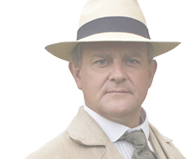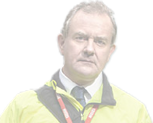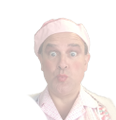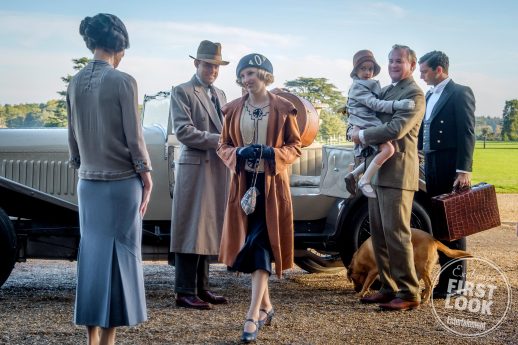Article by Julie Miller for Vanity Fair
The period drama’s mastermind, Julian Fellowes—along with stars Michelle Dockery, Hugh Bonneville, and Elizabeth McGovern—gave Vanity Fair a few new clues about the film, which opens in theaters September 20.
This past May, Downton Abbey fans were delighted to discover that the forthcoming spin-off film will feature some very special guests: King George and Queen Mary, who will trek to the show’s titular Yorkshire estate. Judging by the film’s trailer, the impending royal arrivals are enough to thrust everyone into a state of full-blown tizzy and panic, both upstairs and downstairs. “A royal luncheon, a parade, and a dinner!” Mrs. Patmore exclaims of the decadent itinerary. “I’m going to have to sit down.”
But there is also more for Downton Abbey fans to anticipate from the film, even beyond the king and queen. In conversations with Vanity Fair, the film’s screenwriter Julian Fellowes, director Michael Engler, and stars Michelle Dockery and Hugh Bonneville teased more details about the much-anticipated spin-off, which arrives in theaters September 20. Ahead, the most fascinating takeaways:
King George and Queen Mary’s Downton Visit Is Based on a Real-Life Royal Trip
For six Downton Abbey seasons, series creator Fellowes maintained a difficult balancing act—interweaving the stories of over a dozen characters with real-life historical events. When it came time to decide on a premise for a film, given the number of characters involved, the Oscar-winning Gosford Park screenwriter knew he needed “a central story strand that would bind everyone together—that would affect the characters upstairs and downstairs and in the village.” Coincidentally, Fellowes had been reading about an actual trip that King George and Queen Mary took in 1912 to Wentworth Woodhouse in Yorkshire.
“Downton is also in Yorkshire,” explained Fellowes. “And so it seemed to me quite a good parallel, [and something] that the servants and the family would be equally as excited about. In a film, every story has to be resolved within that film, and you want a unifying bond in a film—so it isn’t too scattered in its focus. That’s what the royal visit has provided us—an event that involves everyone in the house. And they all have different responses and different duties, but they’re all in that sense working towards the same end, which is that the visit should be a success. So we feel that being played out.”
Engler, who previously directed episodes of Downton Abbey, said that he was gobsmacked by the character mileage Fellowes was able to clock within that overarching story. “Small stories, individual stories—what’s interesting about the visit is that it stirs up a bunch of things within Downton. It’s very satisfying, almost like a cross between Gosford Park and Downton Abbey, the series,” he said. Bonneville, who plays Lord Grantham, agreed: “It’s got the highs and lows, zingers and pathos, and skullduggery and big laughs—all the flavors that made the show so enjoyable.”
Expect More Grantham Grandeur
Dockery pointed out that the film is, in spirit, very much a continuation of the show, just taken to a slightly grander scale. The Granthams, who are accustomed to perching pretty comfortably atop their social pecking order, find themselves in the foreign situation of having to impress up. “There are more diamonds and fancier food,” said Dockery, “and it’s really interesting to see that the family and the servants are not at the top. They’re now having to impress the royals, which I think is really great—to see them kind of getting in a bit of a tiz about the arrival of the king and queen. Mary is in true form of trying to keep everybody in order.”
Downton Abbey producers have always been meticulous about maintaining historical accuracy. Gearing up for the film, complete with cameos by a king and queen, was no different: The show’s historical adviser, Alastair Bruce, was joined by one of Queen Elizabeth’s longtime household butlers, as well as a former equerry of Prince Philip’s to ensure that the cast knew how to behave around the king and queen. The staff onscreen will get their own crash course on how to behave around a monarch as well.
There will also be appropriate pomp and circumstance—as evidenced by a parade scene (teased in the trailer) in the nearby village involving hundreds of extras in full uniform, plus every single cast member, horses, and cannons. “It’s pretty spectacular,” Engler said of the parade, put on for the king and queen. “It is like a military mobilization, actually, to make something like that happen. But you know, the film gods were on our side with this one, it felt like. We had three beautiful, sunny days in a row, and we were able to do a good job.”
Engler considered the pageantry around the royal visit to be the perfect premise for a film. “It is brilliant, actually, because I was thinking, How do you make a film in a way that makes it feel like we’re not just spending more money and calling it a movie? The scale of this visit is inherently cinematic. All the design and production values of Downton Abbey that everybody’s come to love are there. But it just raises the stakes, in terms of everybody’s desire to make a good impression on the royals and be part of the the glory of Downton—a phrase that comes up in the film a couple of times.”
Mary Completes Her Downton Evolution
“Mary’s really running Downton now, more than her father,” explained Fellowes of the 1927-set film. But because the movie picks up only a year after the series ended, Lady Mary is still relatively new in her managerial role. According to Dockery, Mary finds support in her brother-in-law Tom Branson (Allen Leech), her trustiest confidante Anna (Joanne Froggatt), and her “hero” Carson (Jim Carter). “Mary reaches out to him for help, and he saves the day,” said the actor of the Crawley’s beloved former butler, who was forced into palsy-induced retirement toward the end of the series. “He comes back and takes on the role of Downton’s butler once more. I love that relationship between Mary and Carson. And that is one of the lovely moments in the film, when she reaches out to him.”
Seeing Lady Mary accept such massive responsibility is a full reversal for the character, who was introduced to audiences as someone more likely to engage in a sex scandal involving a foreign diplomat (R.I.P. Kemal Pamuk) than boring estate management. “Initially, Mary was this young, spoiled, irritable teenager who didn’t really want to take on this responsibility,” said Dockery. “It’s surprised me over the years to know that eventually Mary did succumb to this role that she was destined to always play, and actually embraced it. Initially, I thought she’d be this rebel,” Dockery laughed. “But she’s holding it all together, really.”
As for Cora (Elizabeth McGovern) and Robert: Well, explained Bonneville, it’s not that they’re in the background, “but they’re happily watching over things. The ship is sailing safely onwards, and all is well with the world until news of royal arrivals comes. And that sort of throws the cat amongst the pigeons.”
The Dowager Countess Gets a New Sparring Partner
Aside from King George (played by Simon Jones) and Queen Mary (Geraldine James), another new character will be arriving at Downton: “a cousin called Lady Bagshaw, played by the wonderful Imelda Staunton,” revealed Fellowes. (Trivia note for diehard Downton Abbey fans: Staunton is married in real life to Downton star Jim Carter.) “She is a cousin of the Dowager Countess’s late husband.” Engler added that Lady Bagshaw provides ample entertainment. “She’s got a wonderful story with Penelope Wilton’s character, Isobel, and Maggie Smith’s character…she is distantly related to the Dowager, but they are not close,” Engler laughed. “They come into conflict. So those three and their acting chops working away on the story is pretty exciting.”
Dockery confirmed that Staunton knocks it out of the park. “She, of course, is one of our national treasures, and is perfect for this particular role. It was wonderful to have her become part of the family onscreen. She is Jim Carter’s wife, and we’ve known her for many years. But to have her as part of the show was really, really special,” she says.
Edith Seems to Be in the Karmic Clear
For six full seasons, Lady Edith (Laura Carmichael) endured all manner of heartbreak, insult, and tragedy. Then, thank the period-drama gods, Edith finally found happiness at the finale buzzer—marrying Bertie Pelham (Harry Hadden-Paton) and leap-frogging Mary in social status. “The delicious irony of where we left the TV series,” said Bonneville, “was the most socially vibrant of the family is the one who had the least success in love before, Lady Edith.” Asked whether Edith would endure any roadblocks this time around, Bonneville said, “There’s no question that Edith has found a great place in life. And I don’t think she’s particularly smug about it. I think Edith fans, Edith devotees, always just long for her to be happy, and can be happy that she is happy.” Confirmed Dockery, Edith “is definitely happy. She’s in a more settled place now that she’s married to Bertie, and happy, and she’s definitely more settled than we’ve seen her before.”
This happiness means, according to the Downton insiders we spoke to, that Edith and Mary’s ongoing sibling rivalry seems to be squashed. “At the end of the series, they had both grown up so much in their own lives and in their relationship,” said Engler. “They’ve never been very close, but they have reason to get along, and they sort of love and care about the same people. It feels like life has moved forward.” Said Bonneville, “There are little flashes of sibling rivalries when Edith comes to visit, but on the whole, the family is pulling together in the right direction, and the forces of drama are actually external, which is quite, quite fun. It’s sort of Downton versus the world.”
There Is Potential for a Sequel
“I think there always is potential,” said Engler, who was careful to note that the film does not end with a maddening cliffhanger. Still, said Fellowes: “For me now to say, ‘Absolutely, definitely this is it, there will never be another film,’ I would just be foolish. Because you end up eating your words, you know? I mean, I wouldn’t mind making another film. We were very happy making this one. So let’s see what happens.”
Joked Bonneville, “How many movies were there of Star Wars? This could run and run.”









